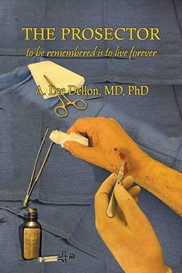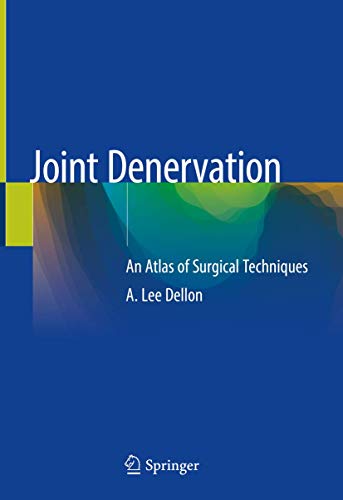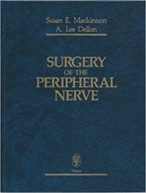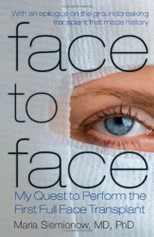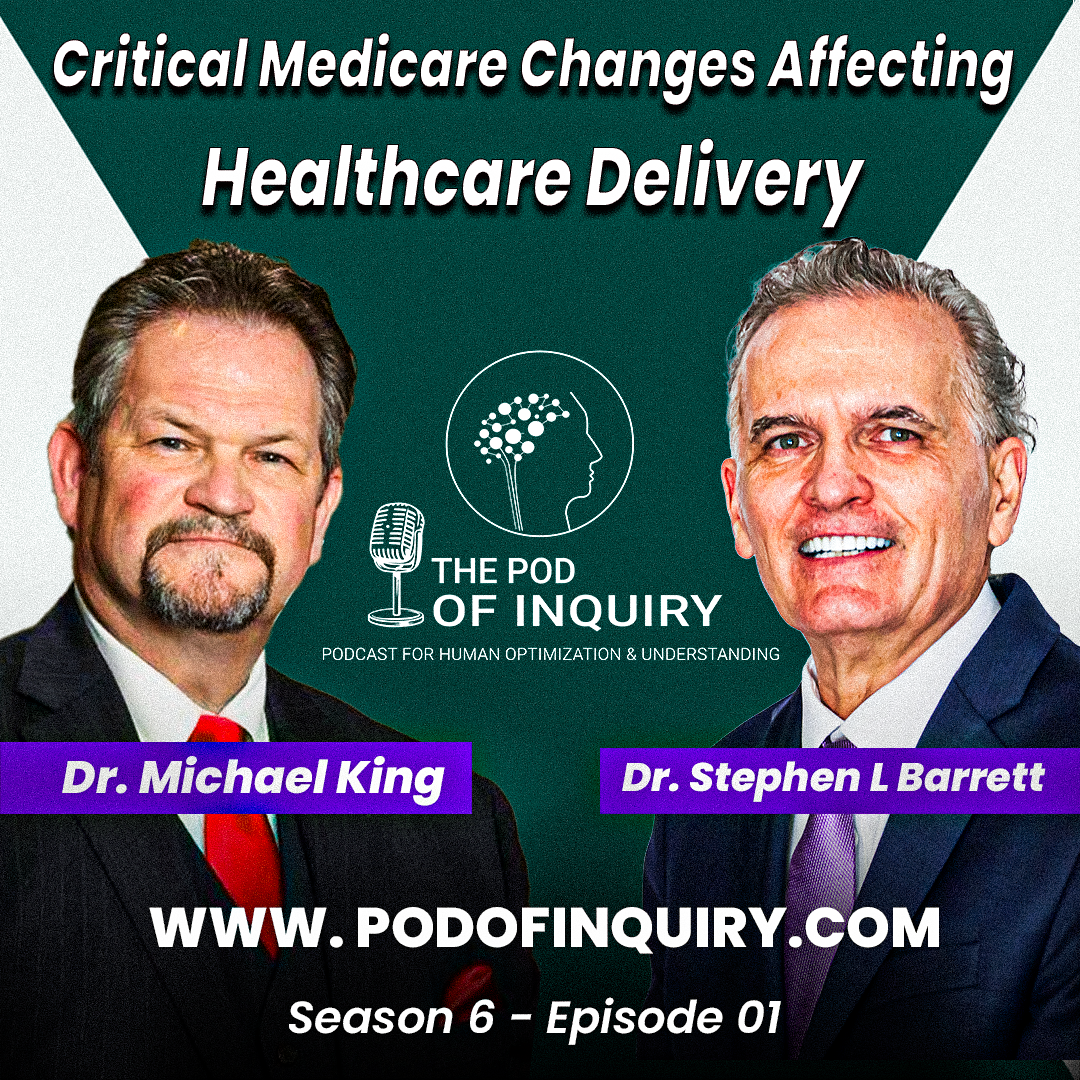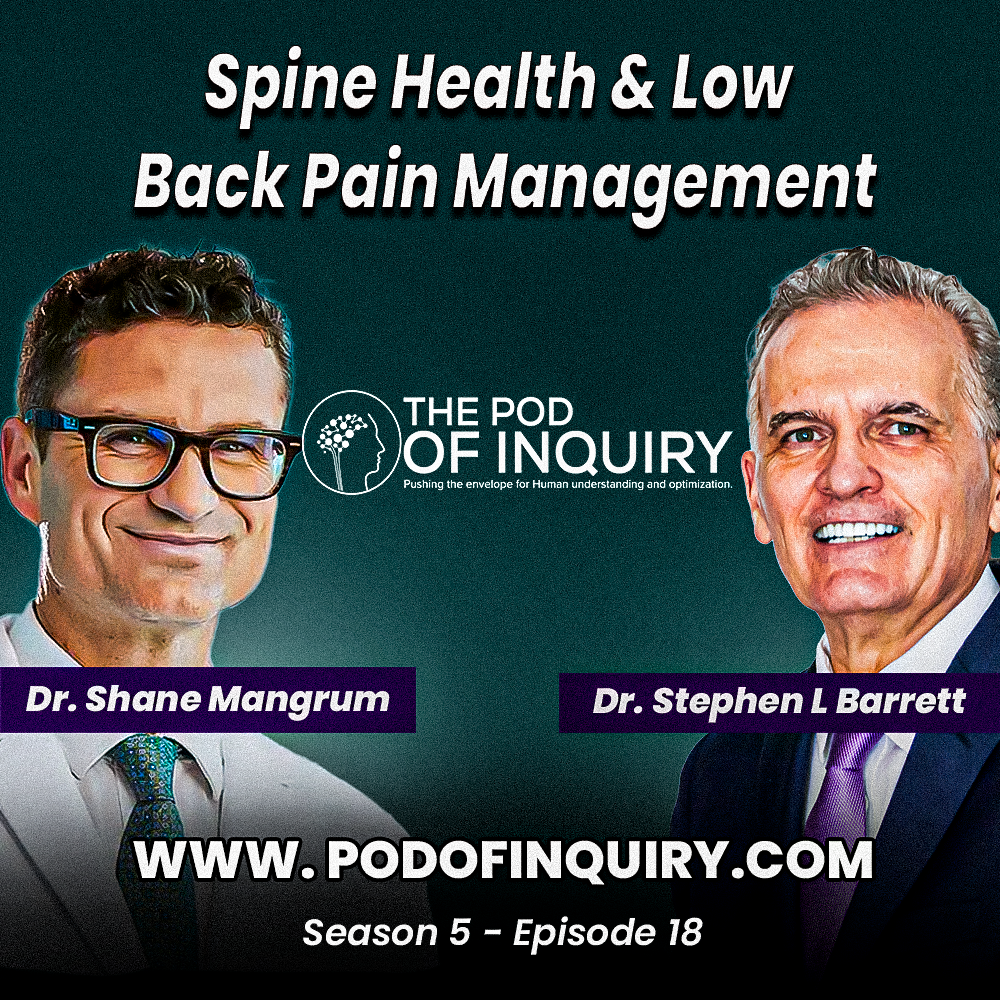I’m really honored to have my mentor, colleague, and friend Dr. A. Lee Dellon retired professor of plastic and neurosurgery at Johns Hopkins. Dr. Dellon is my nerve mentor and we have worked together for more than 2 decades. I think you will find this episode inspiring and educational…please join us.
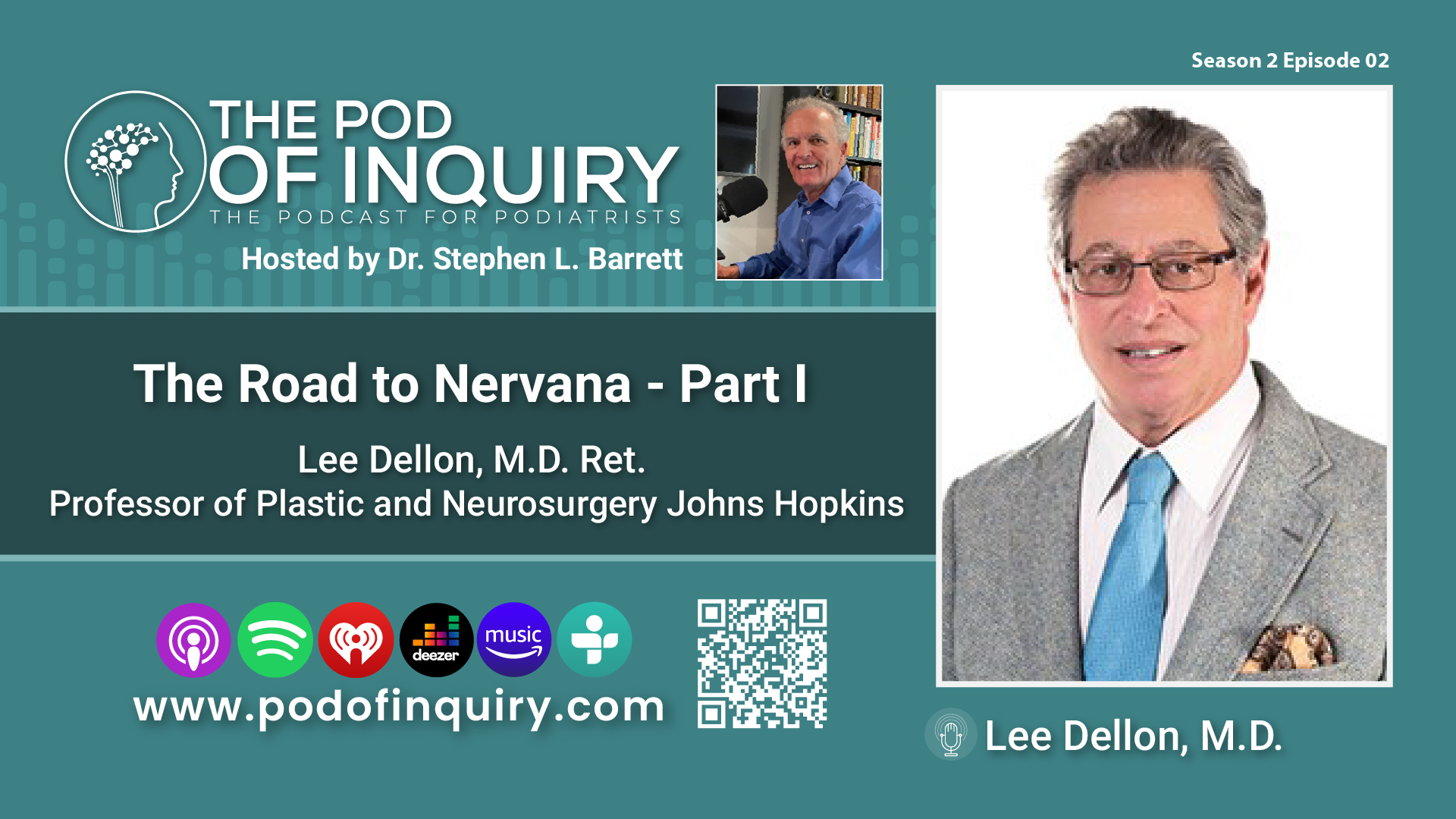
Lee Dellon, M.D., Ph.D
Ret. Professor of Plastic and Neurosurgery
Johns Hopkins University
Dr. Lee Dellon and The Prosector 00:36
- Dellon felt like he was the new version of Michael Creighton writing about medicine
- Barrett introduced endoscopic plantar fasciotomy as a new idea which has met some resistance
- It’s still a very formidable procedure today
- It been incorporated in some of the landmark seminal orthopedic texts
- Introducing surgical procedures that other people think might be ridiculous to work.
- When Dr. Dellon first began to work on diabetics, things that seemed obviously true to him seemed untrue to other people.
- Dellon began to work on joint pain.
- There's not a single nerve to any joint in the human body in an anatomy book, except to the little parts of your spine, where doctors know how to find a small nerve on an X-ray.
- The way we learn about the human body is by prosections.
- Nerves can be found where they're not supposed to be.
- The Prosector has a lot to do with identifying problems that cause pain for people by looking to see where the nerves really are in the human body.
- There's still a lot of discoveries as far as aberrant or less than ideal anatomy book distribution of nerves and different anatomical variations.
With sinus tarsi pain, it's probably due to a bunch of little nerves that got damaged in that space. [09:09]
- That frame of reference allowed a little bit of a different perspective than somebody who was just orthopedic.
- On an X-ray, there’s this space surrounded by other bones so pain in that area could come.
- Once somebody sprained their ankle and tore the ligaments that hold that bony space together, you damage the small nerves and that could be the source of pain.
- So instead of eliminate at the joint, if the nerve endings were there, we can disconnect the nerves.
- One of the powers of multidisciplinary collegiality is that we can sit at a table and people look at things differently.
The most critical observation that happened is after Dr. Dellon started seeing patients that had carpal tunnel that also were diabetic and had peripheral neuropathy. [10:36]
- That was the genesis of everything
- They came back and they said their carpal tunnel pain is better, but they also got sensation back in many cases.
- On the book cover, there's Dr. Dellon’s left hand operating on his right hand, but he’s right handed.
- When you write a book, you need a mechanism; in this book, it was going to be about pain.
- The character in the book gets a burden that he's left handed and burns the back of his right hand.
- That's the opposite side from the carpal tunnel being talked about.
- This man has a little young niece, and she knows growing up she can never hold her uncle's right hand.
- That motivates her to learn more about anatomy and to become a physician to help people in in pain.
- The book has a part where it begins with a patient with pain in their groin after a hernia repair by a general surgeon.
- The doctor Olivia, the woman protagonist or the heroine of the story, goes back to the anatomy lab and realizes there's a second nerve that can be involved in the pain and she develops an operation which we do today where both of these nerves are removed.
- The motivation for his story was inspired by a patient of Dr. Dellon, who was operated on in California for a hernia.
- The patient had sufficient pain that he went and bought a gun and threatened to commit suicide.
- The patient called Dr. Dellon and ultimately wound up operating on him.
- The patient has remained a friend to Dr. Dellon to this day.
- The patient is a writer and director in Hollywood who wrote the movie, Tron.
- The patient’s relief of pain after that surgery prompted him to say that there should be an institute so Dr. Dellon can train and teach people about nerves.
The first diabetic patient that had carpal tunnel and developed a restoration of sensation was contrary to everything that was being taught. [14:25]
- It was very common for diabetics to be sent to a hand surgeon because they had trigger fingers which will be released.
- 2% of non-diabetics get carpal tunnel syndrome, but 15% of diabetics get carpal tunnel syndrome.
- If the diabetic has numbness in their feet, which is called diabetic neuropathy, 1/3 of them have carpal tunnel syndrome.
- He would see many patients with diabetes who had carpal tunnel syndrome and their feet were numb.
Dr. Dellon wondered if could they have a nerve compression in their feet. [14:51]
- Tarsal tunnel syndrome had the same symptoms, as a diabetic, who's the bottom of their foot hurt somebody.
- In the leg, there could be a nerve near the knee, just like there's a nerve near the elbow that controls the top of the foot.
- If we could take a median nerve and a radial nerve and get a glove distribution, we could take the perineal nerve and the tibial nerve and get a glove distribution.
- It was up to Dr. Dellon to figure out what the correct operation was to do at the ankle.
- Prior to Dr. Dellon, people thought there was just one tunnel.
- Going back to the cadaver and doing careful two sections- a pro section, there are four tunnels that need to be released, and one of the dividers between the tunnel that needs to be released.
- He did that to patients with and without diabetes and they got better.
- Dellon sent the study to many medical journals. It began in 1982, went until 1989, but didn't get published until 1992.
- He was told that he’s a plastic surgeon who’s supposed to be doing facelifts, and doesn't have credibility as a researcher.
- He has been working on educational approaches to train other doctors.
You have to identify a clinical problem, take it to the laboratory and identify a solution for the clinical problem. [18:47]
- Dellon began by first operating on patients
- Once it worked, he tried to explain how and why the surgery worked to come up with the actual biochemical mechanisms related to disease.
- He had to design a basic science study.
- If you take a little rat, and give them this drug Streptozotocin, it kills the beta islet cells in the pancreas.
- In three weeks, they become diabetic.
- They don't gain weight, lose hair, get cataracts, and about 20% of them die if they're not given insulin.
- Those mimic the human disease.
- Under the microscope, he opened up these tunnels in a rat the same way he would operate in a human.
- The hypothesis was that sugar goes into the nerve, pulls water into the nerve, and the nerve is swollen.
“If we could eliminate any areas of tightness around the nerve to the foot by releasing the [tarsal] tunnels, even though the blood sugar's 400 and the nerve would swell, there wouldn't be a tight place for the nerve to be compressed.”
- They followed those animals for a year, and measured the footprints of the rats with a computer.
- The diabetic rat had very long print lines develop as developed neuropathy.
- The animals that were operated walk like normal rats with blood sugars of 400.
- If there was not nothing compressing the swollen diabetic nerve, the problem would not develop.
In science, you know something is true is if other people can duplicate the same method or research and come up with the same answer. [22:30]
- A plastic surgery group in Turkey did the same research.
- In addition to which they opened the outer layer of the nerve to try to release pressure within the nerve.
- They show that, again, the rats walk better, and that if the outer layer of the nerve was opened, they got a further improvement.
- The Cleveland Clinic was run by Maria Siemionow, M.D., PhD
- The first person to do a complete face transplant in America and the world.
- She evaluated motor function by testing the motor functions in the feet.
- She utilized the same model Dr. Dellon used which showed motor function was improved.
- There was also work done in Romania, a relatively impoverished country.
- They were able to measure how fast the animal pulls its feet away from the heat.
- They showed that diabetic animals that had no tunnel acted normal and not like a diabetic.
- A laboratory recently in China, Dr. Zheng’s lab, has evaluated pain utilizing the force measurement with Semmes-Weinstein monofilament.
- How much force it took to for the animal to grow.
- They confirmed that diabetic animals that have the pressure taken off their nerves react like normal animals and not like diabetic.
This information always gets a pushback, but these types of studies have been integral in getting people to wake up a little bit. [24:54]
- Medicine is a really a big boat and big boats are slow to turn.
“The slowest boat to turn is a “partner ship,” because there's never a time when all the partners can seem to agree.”
- There's a big push to try to minimize the number of amputations in America.
- There are about 90,000 amputations a year
- Three quarters of them are due to nerve problems in diabetics
- A quarter are due to circulation or blood vessel problems
- The world still has been very slow to accept this
- When a vascular surgeon gets a diabetic, the ankle should be tapped to see if they have a Tinel sign, and then refer them to someone who was trained by Dr. Barrett and Dr. Dellon to do decompressions.
Hopkins required Dr. Dellon to do a little bit more in a mammalian model. [27:11]
- The mammalian model he chose were primates.
- Trigger fingers in people that use their fingers a lot get inflammation that builds up on the tendon and the tendon gets stuck in the little tunnels and clicks.
- Usually the people with diabetes have four or five fingers at the same time.
- It's the mechanism that sugar attaches to the collagen, which is the structural protein on the tunnels around the tendons.
- You can see the tendons on the back of your hand. In the finger, there's a series of five of them.
- Because of those tunnels, we can make really tight grips, the joints all bend in.
- When the sugar fills and thickens those tunnels, the tendons don't move well.
- That can happen inside the nerve. Between the nerve fibers, there's a structural protein collagen.
- The same glucose goes in and binds to collagen and makes the nerve stiffer.
- The way you measure that is called a stress-strain curve: you pull something and it stretches.
- You keep pulling with more force till it finally stops stretching and then breaks.
- There have been two separate studies that show that in a diabetic animal.
- The diabetic nerve has an altered stress-strain curve, meaning it's stiffer.
- There are three underlying mechanisms in the diabetic related to their disease.
- As surgeons, we don't change any of these things; they're still diabetics, but they don't have a tight place to press on the nerve.
The initial semantics were wrong when a lot of the people indiscriminately said, we're operating on diabetic peripheral neuropathy. [30:12]
- The answer is that you're operating on a superimposed nerve compression in a patient who has diabetic peripheral neuropathy.
- Lack of judiciousness and nomenclature might have led to some of the pushback that was seen in the neurology community.
- The histology studies have been done by Dr. McKinnon and Dr. Dellon in 1984 from a compression model in a rat and in primates too.
The question was what getting feeling back in the foot mean that diabetics wouldn't have amputations anymore. 32:49
- There was a group of about 40 patients, and 25 patients only came back after being operated on one leg.
- In one year, two of their investigators called this group of patients who never came back.
- The blood sugar is the same in both legs.
- In the leg they operated on had no amputations or alterations.
- In the opposite leg that did not have the surgery, two or three had amputations and four or five patients had ulcers.
- When you compare that statistically, there was a significant difference in the leg that was operated on versus the non-operated leg
- It has nothing to do with placebos.
- For whatever reason, they never came back to do their other leg even though one leg was better.
- That was the beginning of looking at whether or not the surgery can minimize overall health care costs by decreasing ulcers, amputations, admission to the hospital for foot infections.
“One of the areas of pushback is there still this lack of understanding that in a diabetic peripheral nerve, once a source of compression is removed, can regenerate.” [34:33]
- In the textbook surgery of the peripheral nerve in the primate, the nerve at the cubital tunnel was compared a few inches north, in an area where there's no known site of compression.
- The nerve in the cubital tunnel looked like a little bomb had gone off
- The myelin was gone and it was just a bad looking nerve.
- Just north of it, there was a pristine myelin, intraneural edema, as expected like what Jakobsen
- Two inches north than the cubital tunnel is the same blood sugar, right? And then, and then comment on the fact that these nerves can regenerate. And you've shown that.
- A separate study showed a nerve repair in a diabetic animal will heal and have the same result in a non-diabetic animal
- The nerve regeneration in a diabetic can occur a little slower, but the same as it can.
- In many clinical studies that show patients with diabetes do as well after their carpal tunnel, maybe slightly less well than non-diabetics.
- If you're a Christian, you have to believe in Jesus Christ; and if you're a neurologist, you have to believe in electrodiagnostic testing.
- Neurologist doesn't believe there's a nerve compression, unless they can show it was an electrodiagnostic study.
- There are many things wrong with that assumption; that's what guides their decision making.
- In people that have all the symptoms of carpal tunnel get sent for testing, 1/3 hear the electrical tests as normal.
- 1/2 of people with clinical evidence of ulnar nerve problems in their elbow have normal electrical testing.
- In diabetics where the nerve is not normal with electrical testing, the nerve is usually so bad, they can't show that there's an underlying superimposed nerve compression.
- Dellon did research on monkeys in the Hopkins veterinary department
- There was a monkey and its cage was labeled sweetie.
- In the 1890s, Osler, who was the first chief of medicine would diagnose diabetes by sticking his finger into the person's urine, taste it and say it was sweet; urine was sterile.
- That was how they made the diagnosis of diabetes.
- This rhesus monkey was only the third spontaneous onset Type 1; Type 2 Diabetes, insulin requiring diabetes and a rhesus monkey.
- One of the Hopkins neurologists did the electrical testing on the upper extremity and the lower extremity.
- The monkey has diabetic neuropathy and it’s exactly the same as humans; they came out with normal human type measurements for conduction, velocity and latency.
- The median nerve at the wrist, and above the wrist, the only nerve at the elbow and proximal and at all the pathology was where the nerve was, in a tight place where the nerve was not in a tight place; it looked like a perfectly normal nerve.
- Multiple sites of compression along the course of a peripheral nerve can look alike to an electrodiagnostic study; it's hard for them to pick up a nerve compression.
- If it was solely a metabolic problem, without this compression, there would not be that disparate histology displayed under the microscope which is very objective.
- In humans who have a nerve compression, we never take the nerve out, because they would lose function.
- Patients don't like having surgery.
“When a patient comes back and wants it done to the other side. They have no reason to want to do that. Unless it really made them better.”
Dr. Dellon’s book ends with this operation being done on someone who has a neuropathy. [42:59]
- The book is historic fiction, but everything in it is true
- The characters have lived through the events that he has lived through in his life and the way he has been attacked for the new operations he has introduced.
- The reader will have fun seeing what happens and remember the lead character in my story is a woman.
- There were very few women surgeons in 1910.
- The book has the controversies related to women and surgery.
- Surgeons versus orthopedic surgeons and what they do to nerves, lawyers, and how they react to new operations, and how people in general react to introducing something like this work with diabetes.
Once he was convinced that this was true and it worked, he began to have workshops where Dr. Barrett was very helpful. [44:18]
- They had 30 workshops between the year 2002-2008.
- They trained 353 people, majority of which were podiatrists
- Many of whom had learned the endoscopic player fasciotomy from Dr. Barrett
- They tried to always include surgical educators, program directors, neurosurgeons, orthopedic surgeons, plastic surgeons, besides podiatric surgeons so these ideas would spread out throughout the country.
- In China, one of the oldest countries in the world, there are large studies.
- In the newest country in the world, North Macedonia, the Chief of Plastic Surgery is a woman and is doing the surgery there.
- At our peripheral nerve society meeting, she had a group of patients who are diabetics with ulcers and who had wound healing problems
- She released the nerve and identified quicker wound healing.
- Her husband is a cardiologist and his laboratory could measure blood flow.
- She measured blood flow in the feet and these people showed improved blood flow.
- So the word is spreading slowly to one of the oldest countries and to the newest country.
- Little by little, we hope to change this backlog of people not understanding what's going on.
Once even the most critical critics look at some of this very objective science, it's hard to attribute an alteration to a placebo effect. [46:03]
- Combine the clinical data with what has already been done, the genesis of the rat studies, the primate study
- The fact that there's a whole cadre of patients that wanted to have their second leg done
- There are studies now showing improvements in intraoperative nerve monitoring within minutes after the nerve has been decompressed.
- The answer to that is improved blood flow which happens in the neurologists.
- When Dr. Dellon would tickle the bottom of the patient's foot, they suddenly had this feeling in the bottom of their foot, whereas prior to that they couldn't really feel their foot.
- The neurologist criticized him a lot for this.
- The nerve fibers have died, and they couldn't have regenerated from their ankle to their toe in the hour in the recovery room
- But that happens because when you decompress the nerve, you see blood flow immediately right back into the nerve.
“The nerve fibers when you sleep on your hand, and you wake up because your hand is numb, the nerves didn't die, the pressure just stopped the blood flow.”
- The buzzing and tingling is a result of decreased blood flow.
- The nerve fibers that haven't died just stopped reporting messages to the brain because of the pressure.
- When you remove that pressure, they can show improved motor function or improved sensation in the operating room.
- The fibers that died grow back on it an inch a year.
- It may take a year for the patient to really get feeling back in their big toe.
- The pain is often relieved as soon as the pressure is off the nerve.
- One of the wound care centers called Dr. Barrett up one day and said patients that have had this decompression had 3,000% increases in response to thermal stimulus and significant blood flow improvement.
- In some diagnostic blocks, such as the Phoenix sign, he is able to see in Doppler ultrasound improvements in vasculature.
When Dr. Dellon did the work on hands and began to do the work and feet, it brought to mind the work of a doctor named Paul Brandt. [51:16]
- Brandt worked with leprosy patients and his father and mother were Christian missionaries.
- He was born in India and grew up as a child seeing children with leprosy.
- His parents would never let him play with these children.
- Then he was sent back to London, where they were from and went through medical school and became an orthopedic surgeon.
- After World War II, they all survived the bombings in London, he went back to India, and he lived with the leprosy patients.
- He began to see these patterns in their hand and foot drop; he realized these were peripheral nerve problems.
- In his book that he wrote, called Pain the gift that nobody wants.
“If you have pain, it's protective; without pain, you’re anesthetic.”
- The real reason that the leprosy patients lose their fingers, toes, nose, is because they were cast out to live alone in valleys and impoverished places.
- The animals that night would come and eat off their fingers and toes.
- The Indians were Hindus and would not allow the sections.
- The Hindu person died in the jungle didn't have any family, and Dr. Brandt was allowed to do an autopsy on this person.
- He found that the peripheral nerves looked like normal nerves till they got to tight places where they had big swollen areas
- He wrote his book to help educate people about leprosy and why they had their deformities and progressive paralysis.
The Prosector was written to educate people about peripheral nerves and peripheral nerve research. [54:29]
- It takes you on a journey through different pain problems
- The next part in the evolution was to begin to work on a way to educate the public about this problem.

